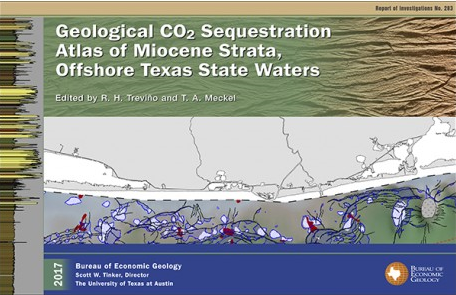PIDAS
Pressure-Based Inversion and Data Assimilation System (PIDAS) for CO2 Leakage Detection
Principle Investigator: Alex Sun
2013–2016 Project Synopsis
The overall objective of this project was to develop a Pressure-based Inversion and Data Assimilation System (PIDAS) for detecting CO2 leakage from geologic formations storing carbon dioxide in the subsurface.
Carbon capture, utilization, and sequestration (CCUS) will enable deep reductions in global carbon emissions if high storage efficiency can be achieved. A major hurdle to industrial-scale implementation of geological carbon sequestration (GCS) projects is the potential migration of fluids (brine or CO2) from the storage formations and the resulting legal and financial liabilities. The capability to accurately identify leakage pathways by which stored CO2 could leak, has leaked, or is leaking from the targeted storage zone is thus of paramount importance to site licensees and regulators. Although many monitoring, verification, and accounting (MVA) techniques have been devised, pressure-based monitoring technology remains the most sensitive and reliable technique for early detection. It has consistently received the highest score in terms of benefit/cost ratio and it provides the greatest potential for leakage detection with broad areal coverage. Although much has been done in the area of forward modeling of leakage, the more challenging pressure inversion problems need further theoretical, experimental, and field studies.
The PIDAS tool expands and strengthens existing pressure-based techniques for leakage detection in GCS repositories. The major research objectives were to perform integrated theoretical and numerical analysis, laboratory experiments, and field tests and develop effective data assimilation and inversion algorithms for identifying leakage pathways.
For a PDF flier on PIDAS, please click here.
Summary of Project Successes
Sun, A. Y., and Nicot, J.-P., 2012, Inversion of pressure anomaly data for detecting leakage at geologic carbon sequestration sites: Advances in Water Resources, v. 44, p. 20‒29. https://doi.org/10.1016/j.advwatres.2012.04.006.
Sun, A. Y., Nicot, J.-P., and Zhang, Xiaodong, 2013, Optimal design of pressure-based, leakage detection monitoring networks for geologic carbon sequestration repositories: International Journal of Greenhouse Gas Control, v. 19, p. 251–261. https://doi.org/10.1016/j.ijggc.2013.09.005.
Sun, A. Y., Zeidouni, M., Nicot, J.-P., Lu, Zhiming, and Zhang, D., 2013, Assessing leakage detectability at geologic CO2 sequestration sites using the probabilistic collocation method: Advances in Water Resources, v. 56, p. 49–60. https://doi.org/10.1016/j.advwatres.2012.11.017.
Last Updated: March 20, 2025



